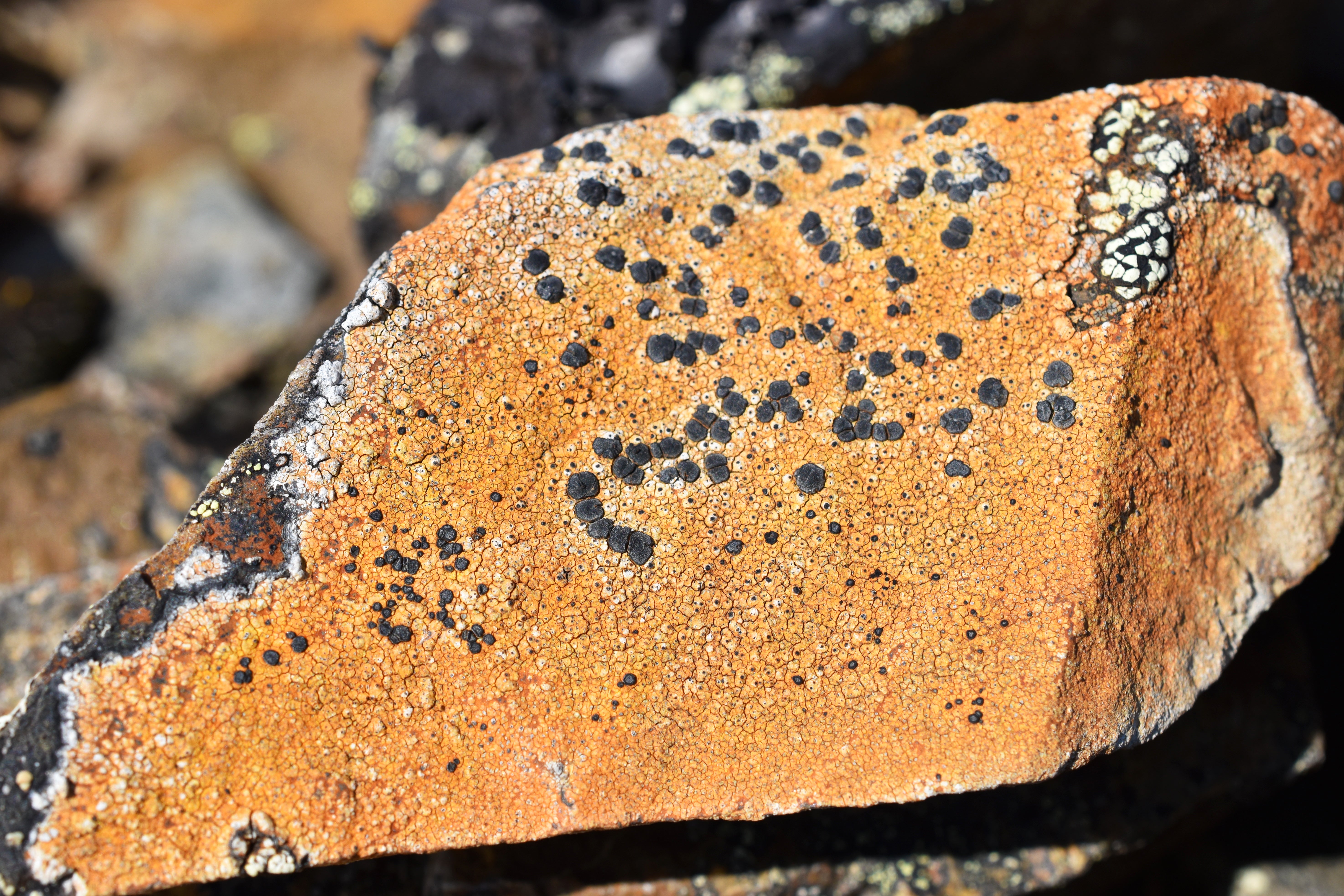Often mistaken for primitive plants such as moss (if they are even noticed in the first place), lichens are actually not plants at all. They are a group of versatile symbiotic life-forms that play crucial roles in myriad ecosystems, from rain forests to Arctic tundra. Though some do closely resemble moss, others look like little more than crusty orange stains, and still others branch out like corals. But the most impressive aspect of lichens is their interspecies teamwork—a relationship that climate change is threatening to disrupt, throwing their very survival into question.
A mint-colored lichen clinging to a tree’s bark may seem like a single organism, but it is actually a composite: fungi and algae (or sometimes fungi and cyanobacteria) living as one in a mutually beneficial relationship. As the algae photosynthesize, they produce sugars that nourish the fungi. In exchange, the fungi offer the algae minerals and water and construct a micro habitat where the algae can thrive—a sort of fungal greenhouse.
When a fungus meets the right alga, they, in essence, become complete. “It’s like a Transformer,” says Matthew Nelsen, an evolutionary biologist at Chicago’s Field Museum, who specializes in lichens. “It suddenly turns into something else and makes this new structure that’s different from how that fungus looks on its own.”
The sum of the two species is greater than its parts, making lichens one of nature’s most fruitful pairings. Recent research estimates these organisms date back some 250 million years, and in that time, they have persevered through an asteroid strike and several ice ages. Today lichens cover an estimated 7 percent of the earth’s surface and can be found almost everywhere, from arid deserts to rocky seashores. But new research by Nelsen and his colleagues, published on Tuesday in Frontiers in Microbiology, has revealed that even these adaptive organisms are feeling the heat from climate change.

Losing lichens would be disastrous for the countless ecosystems that rely on them. In waterlogged environments, such as the temperate rain forests of the Pacific Northwest, lichens are key cogs in the hydrology process because they absorb water as it moves through the forest system. In deserts, a crust of lichens stabilizes soil and thus helps prevent erosion. Lichens even keep the carbon cycle humming: as their algae photosynthesize, they pull carbon dioxide from the air and pump out oxygen. After they die, their carbon-rich bodies decompose.
Lichens are also a crucial food and habitat for organisms ranging from reindeer to banana slugs. Many bird species, such as the ruby-throated hummingbird, use bits of lichen to construct nests. Some cryptic spiders even disguise themselves as a lichen to ambush prey.
The new study’s worrisome finding crystalized when Nelsen and other Field Museum researchers were examining the climate preferences of lichens powered by a genus of single-celled green alga called Trebouxia. Algae of this type can be found inside some 7,000 species of fungi, creating more than half of all known lichen species.
By comparing the DNA of several Trebouxia species and reconstructing the evolutionary history of the alga, the researchers realized they could essentially measure how long various lichens took to adapt to new environments. Essentially, they could compare modern lichens’ climate preferences with those of their ancestors. Using a battery of statistical tests, the scientists created a time frame of lichens’ response to past episodes of climate change—and a potential framework for predicting how they may fare in the future. “We can see the past changes these groups have undergone and think about that in the context of modern climate change,” Nelsen says. He and his colleagues determined that current climate change projections far outpace these lichens’ ability to adapt.
Based on past rates of lichen evolution, it would take many Trebouxia species hundreds of thousands of years—and a few potentially millions of years—to keep pace with the extent of climate change forecast for the next century. “It’s the pace that’s especially alarming,” Nelsen says. “These changes are quite out of the ordinary for these lichens to be able to respond to.” This may result in large swaths of lichens’ ranges becoming inhospitable to the algae involved.
Although Nelsen and his co-authors focused on the adaptive capabilities of algae, he notes that both components of the lichen would have to be in sync in order to migrate to a more hospitable environment. “What if the alga can move fast, but the fungus is slow? What does that mean for the fungus?” Nelsen says. “Could the alga persist while the fungus that needs it runs into trouble?”
Some lichens will be able to escape to more hospitable environments. But others, especially cold-adapted lichens that are already living near their climate limit, are likely to succumb to increasing heat and aridity.
According to James Lendemer, an associate curator and lichen specialist at the New York Botanical Garden, who was not involved with the new study, the findings join a growing trend of alarming research into how lichens may fare in a warmer, drier future. “Every study of lichens and climate change does not point to good things,” he says.
